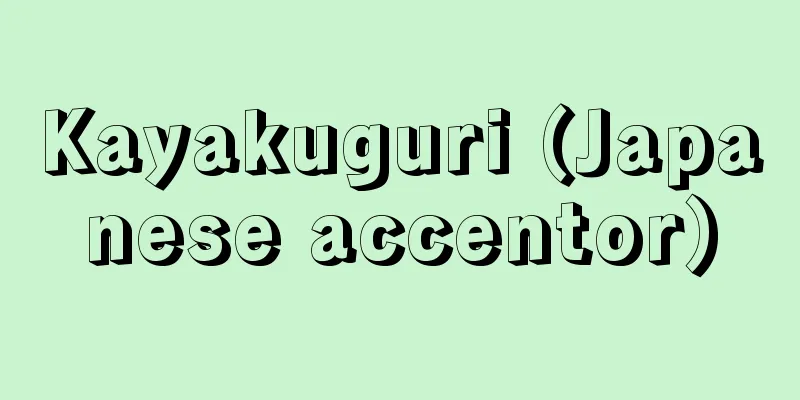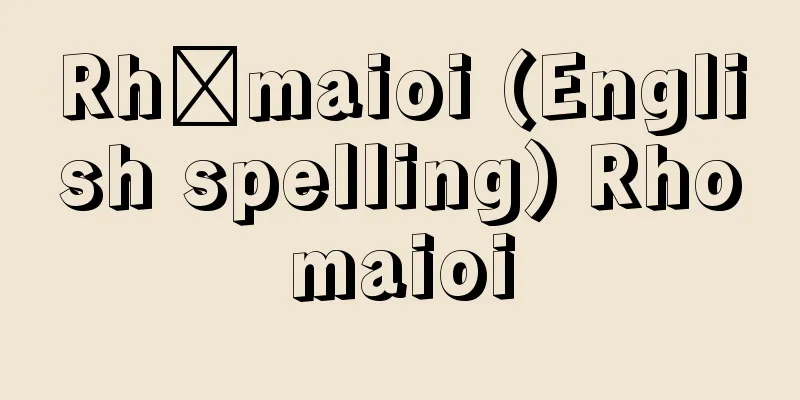Reverse repair

|
It is the practice of Buddhist rites in advance while alive, in order to pray for enlightenment after death. This is the opposite of memorial services performed by others after death. The reverse means in advance, and it is also called yoshu (pre-ceremony). The Kanjokyo Sutra teaches that one-seventh of the merits of memorial services are given to the deceased, while the Jizo Bosatsu Hongankyo Sutra teaches that all of them can be obtained. An example of yoshu is the gyakushuganmon (text of the repose of the dead) written by Sugawara no Michizane at the end of the 9th century, and traces of it can be seen in the ganmon (text of the prayer) written by Oe no Masafusa in the late Heian period. In the aristocratic society of the Heian period, it was common to set aside 77 days (49 days) like memorial services, and there was not much difference between this and the scriptures that were copied and memorialized, and the statues of Buddhas and Bodhisattvas that were painted. However, because the merits of gyakushu were greater than those of memorial services, many retired emperors and aristocrats would perform it multiple times by themselves. In the Middle Ages, it became popular among the general public as well. They would give the deceased a Buddhist name or a posthumous name while they were alive, write the posthumous name in red ink on their memorial tablets or gravestones (or in ink for memorial services), and carve prayers for the resurrection on their gravestones or stone tablets. In addition, memorial services for young people who died young, performed by older people to pray for their souls, were also called resurrection. [Ohara Jin] "A Historical Study of Reverse Shugi Faith by Kawakatsu Masataro" (Otemae Women's University Review 6, 1972) " "A Study of Reverse Shugi - The Basis and Reality in the History of Medieval Faith by Ikemi Sumitaka" (Jodo Buddhist Studies 14, 1981) " "Ito Yoshihisa's "Reverse Shugi in Medieval Japanese Zen Buddhism and Its Ideological Background" (Indian and Buddhist Studies 57 (2), 2009)" Source: Shogakukan Encyclopedia Nipponica About Encyclopedia Nipponica Information | Legend |
|
生前にあらかじめ死後の菩提を祈願して仏事を修すること。没後に他人により行われる追善に対す。逆はあらかじめの意で、預修(よしゅ)ともいう。『灌頂経(かんじょうきょう)』に追善による功徳は全功徳の7分の1が死者に、『地蔵菩薩本願経』にそのすべてが得られると説かれる。逆修の例としては9世紀末菅原道真作の逆修願文が早く、平安後期では大江匡房作の願文にその跡を見ることができる。平安時代の貴族社会では追善仏事のように七七日(四十九日)の日数を当てることが多く、また書写供養した経典や図絵造立した仏菩薩像もそれと大差ないが、追善に比して逆修の功徳の大きさから、上皇や貴族の中には1人で何度も行う例が少なくない。中世になると民間にも流行した。生前に法名や戒名をつけ、位牌や墓石に戒名を朱書し(追善の場合は墨書)、塔婆や板碑に逆修の願意を彫るなどした。また早世した若者の亡魂をとぶらうため、年長者が追善供養をすることも逆修と呼ばれた。 [小原 仁] 『川勝政太郎著「逆修信仰の史的研究」(『大手前女子大学論集6』所収・1972)』▽『池見澄隆著「逆修考―中世信仰史上の論拠と実態―」(『浄土宗学研究14』所収・1981)』▽『伊藤良久著「中世日本禅宗の逆修とその思想背景」(『印度學佛教學研究57(2)』所収・2009)』 出典 小学館 日本大百科全書(ニッポニカ)日本大百科全書(ニッポニカ)について 情報 | 凡例 |
<<: Conventionalism - English spelling: conventionalism
Recommend
Civil war - insurgency; civil war
Also called a civil war. A struggle for power by a...
Princess Otohime
Originally, the term Otohime meant the younger pri...
Jacques‐Auguste de Thou
1553‐1617 French historian. The de Thou family was...
Hirose Saihei
Year of death: January 31, 1914 Year of birth: Bun...
Autumn alder - Autumn alder
A deciduous subtall tree of the Ulmaceae family (...
Yuzawa [Hot Spring] - Yuzawa
A hot spring in Sekikawa Village, Iwafune County, ...
Fukuroi [city] - Fukuroi
A city in the southwest of Shizuoka Prefecture. It...
Patterns of Culture
…Based on field surveys of American Indians and l...
Whale tow - Whale tow
…Generally, it is treated without distinction fro...
Surprise attack
〘 noun 〙 To attack an enemy by an unexpected means...
Chihō
A Neolithic to Bronze Age site near Ulanhad (Chif...
Millipede
A general term for arthropods belonging to the Pol...
Utsunomiya Daimyojin Shrine
...The water turned red from the blood that flowe...
Uranus - Uranus
It is the seventh planet from the innermost part o...
Fritschiella
…There are approximately 10,000 known species wor...









